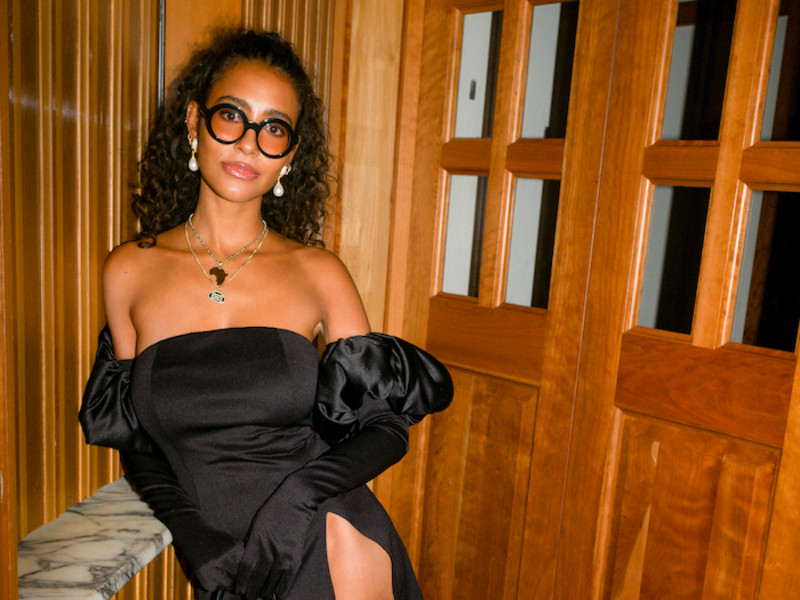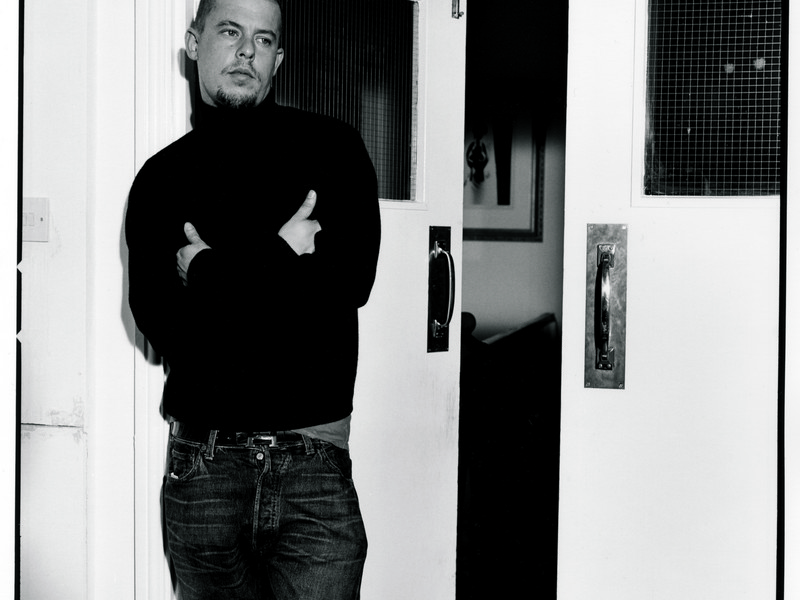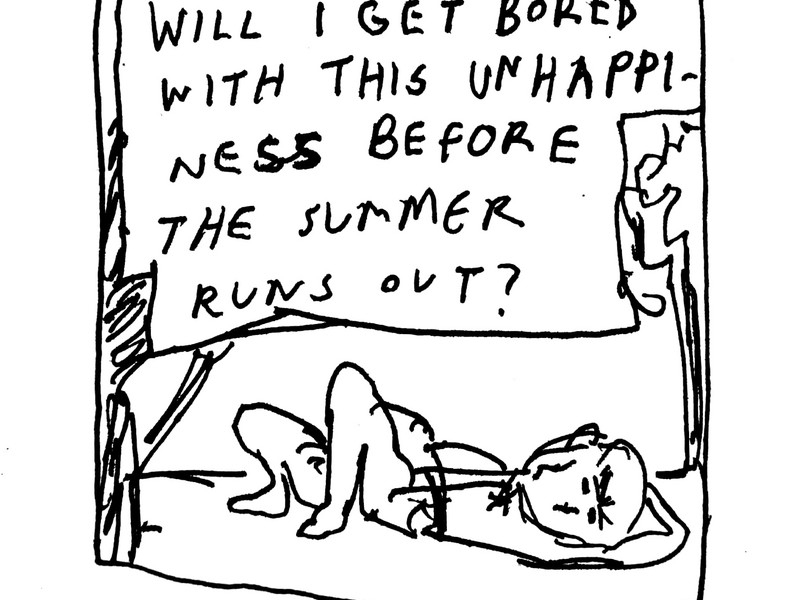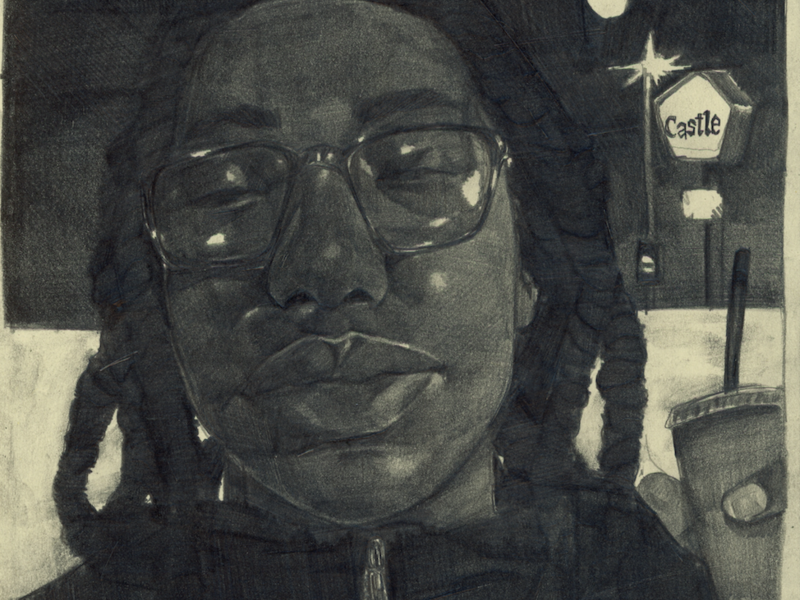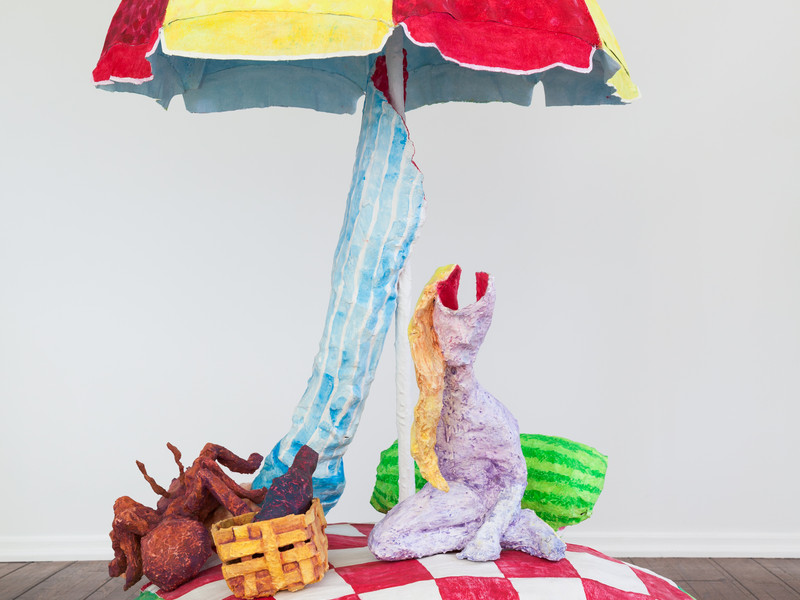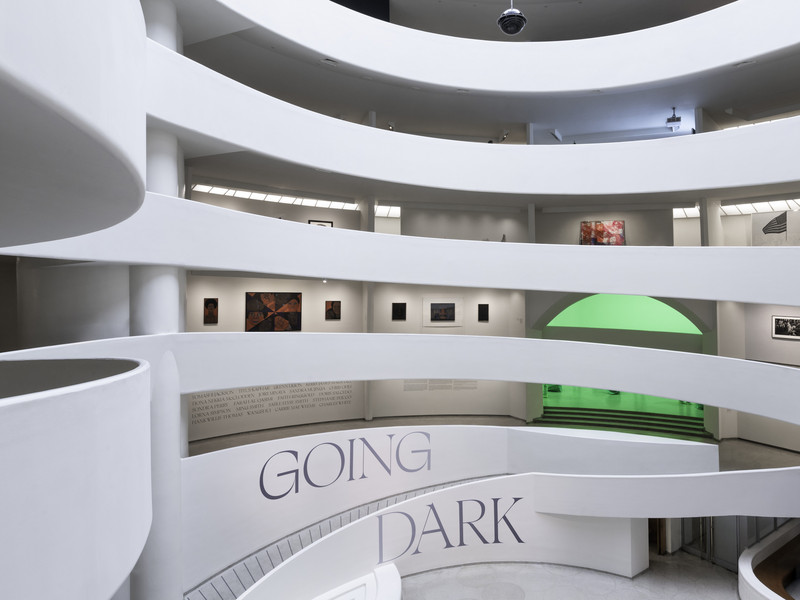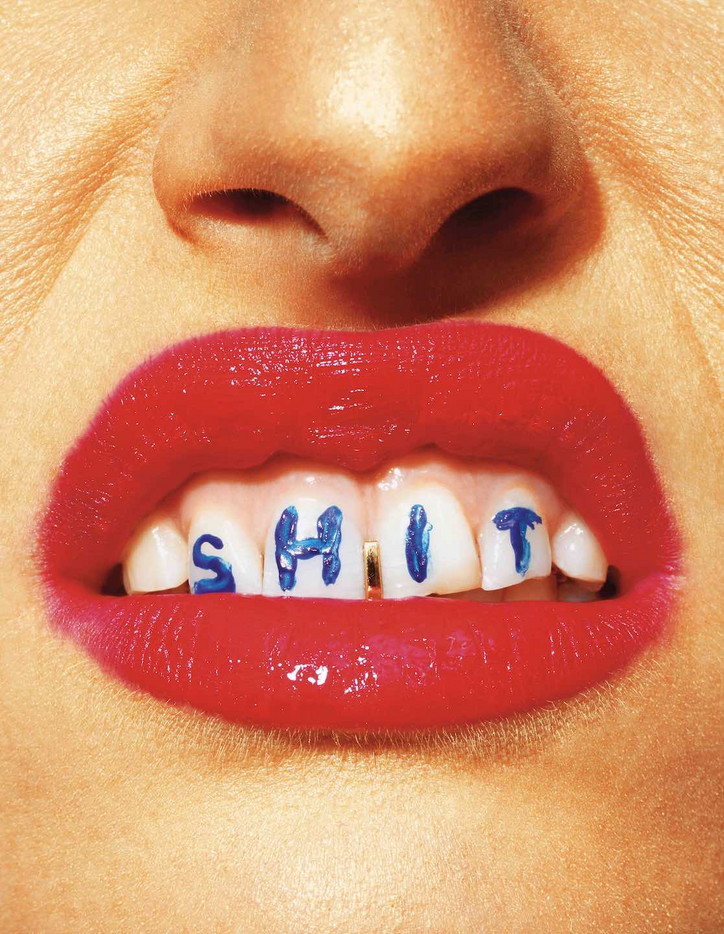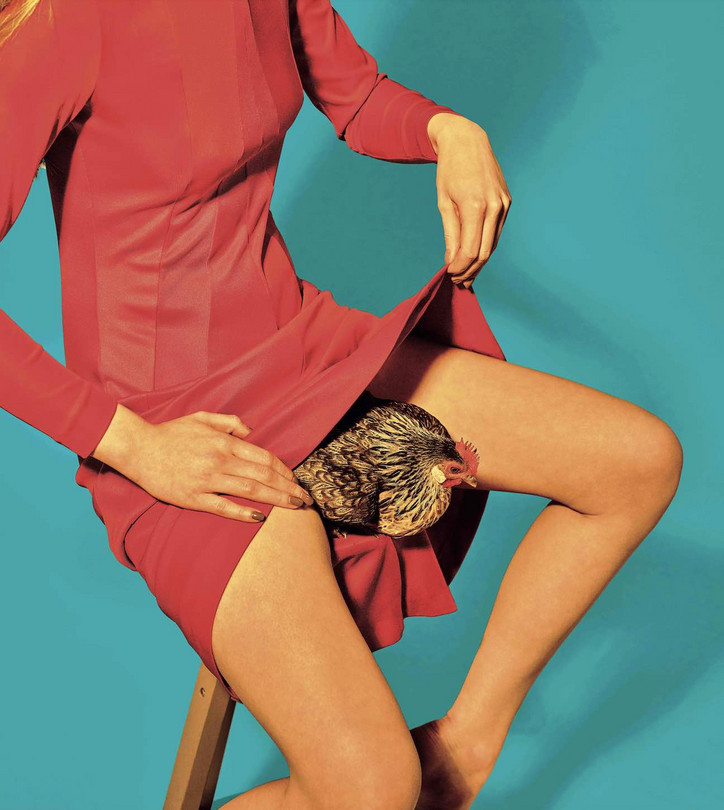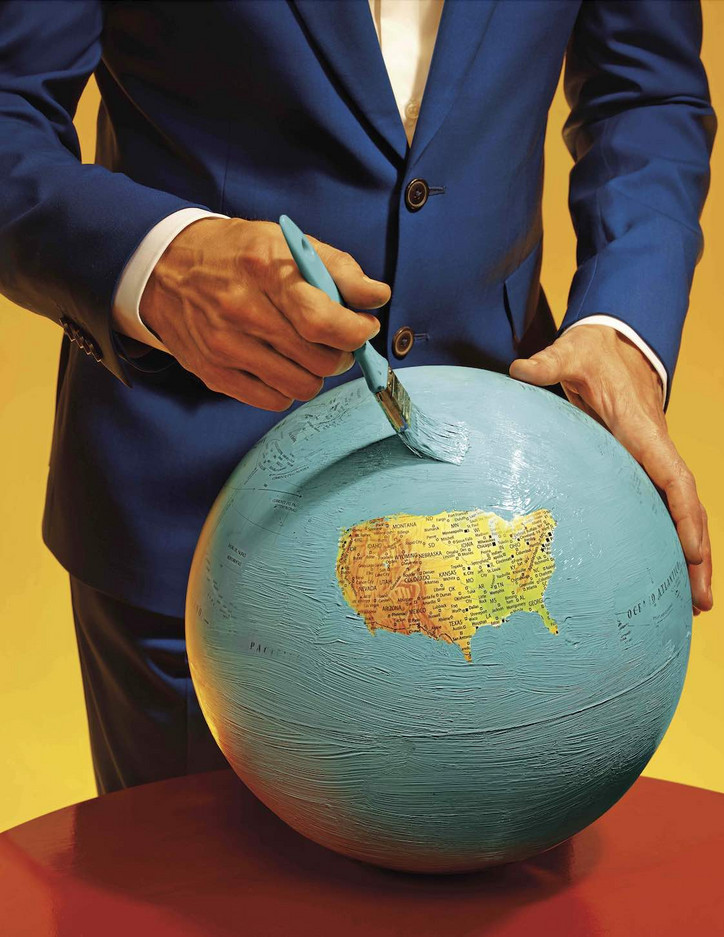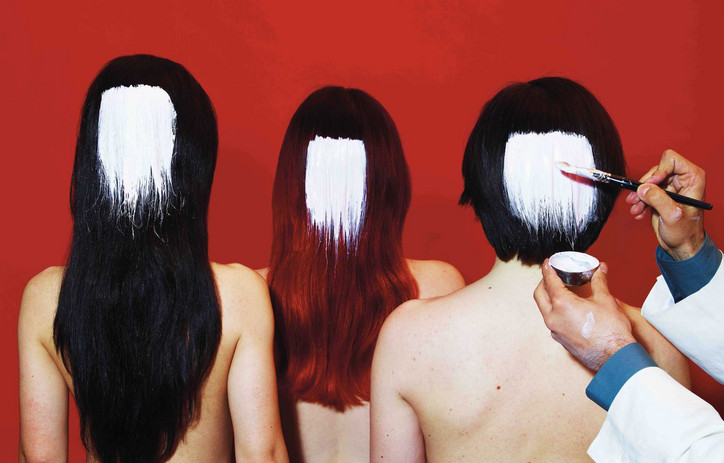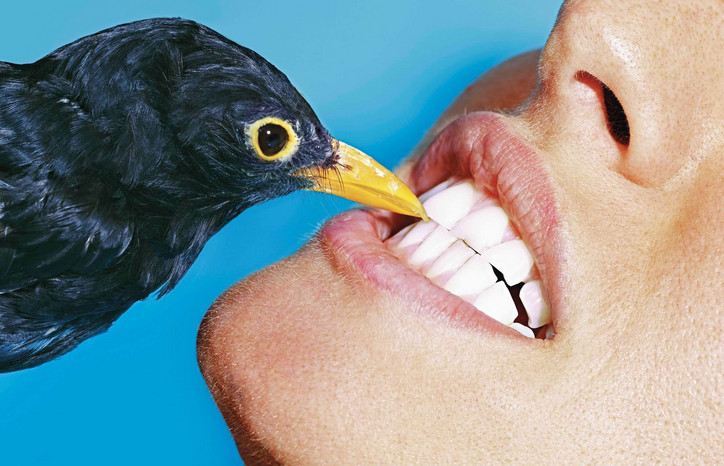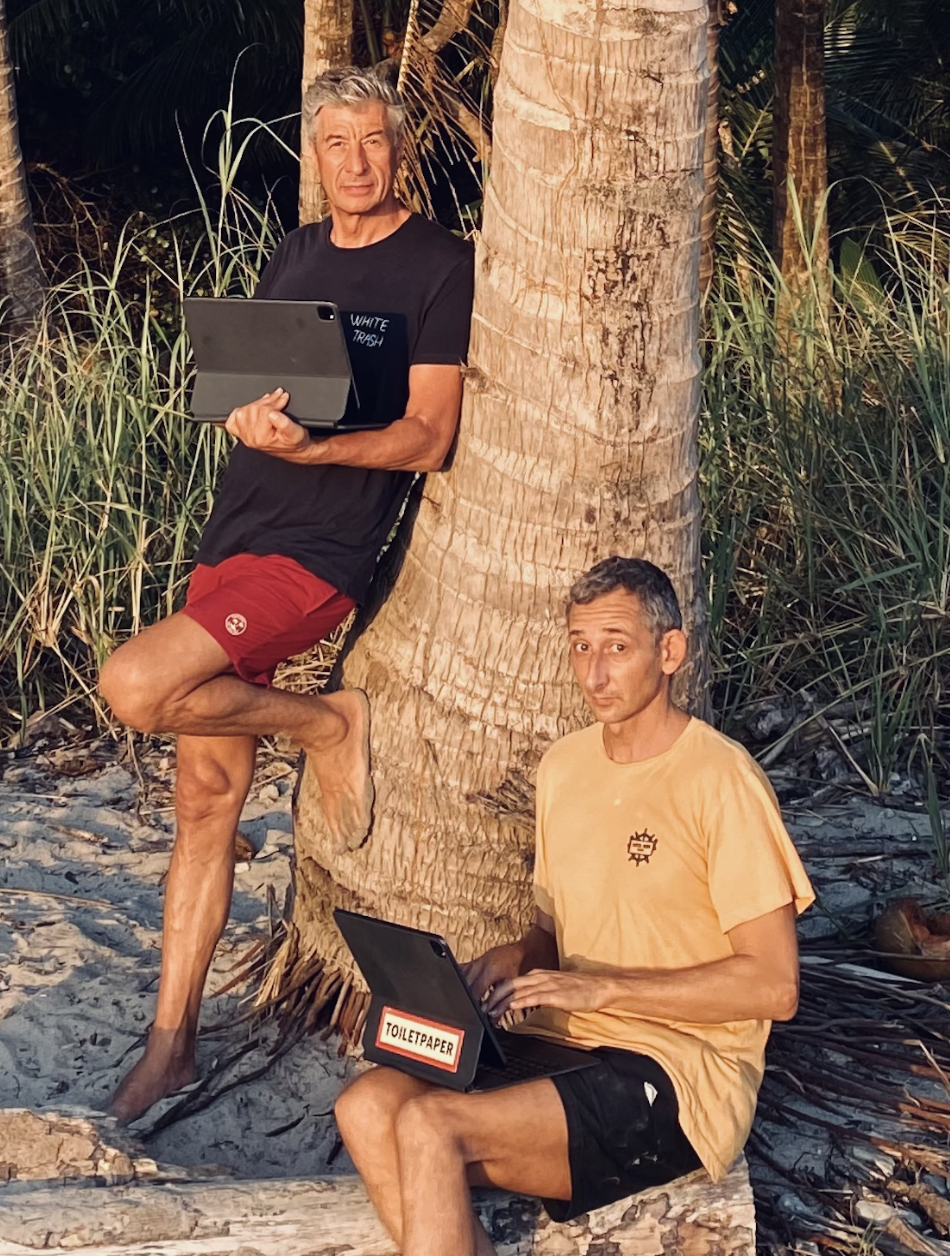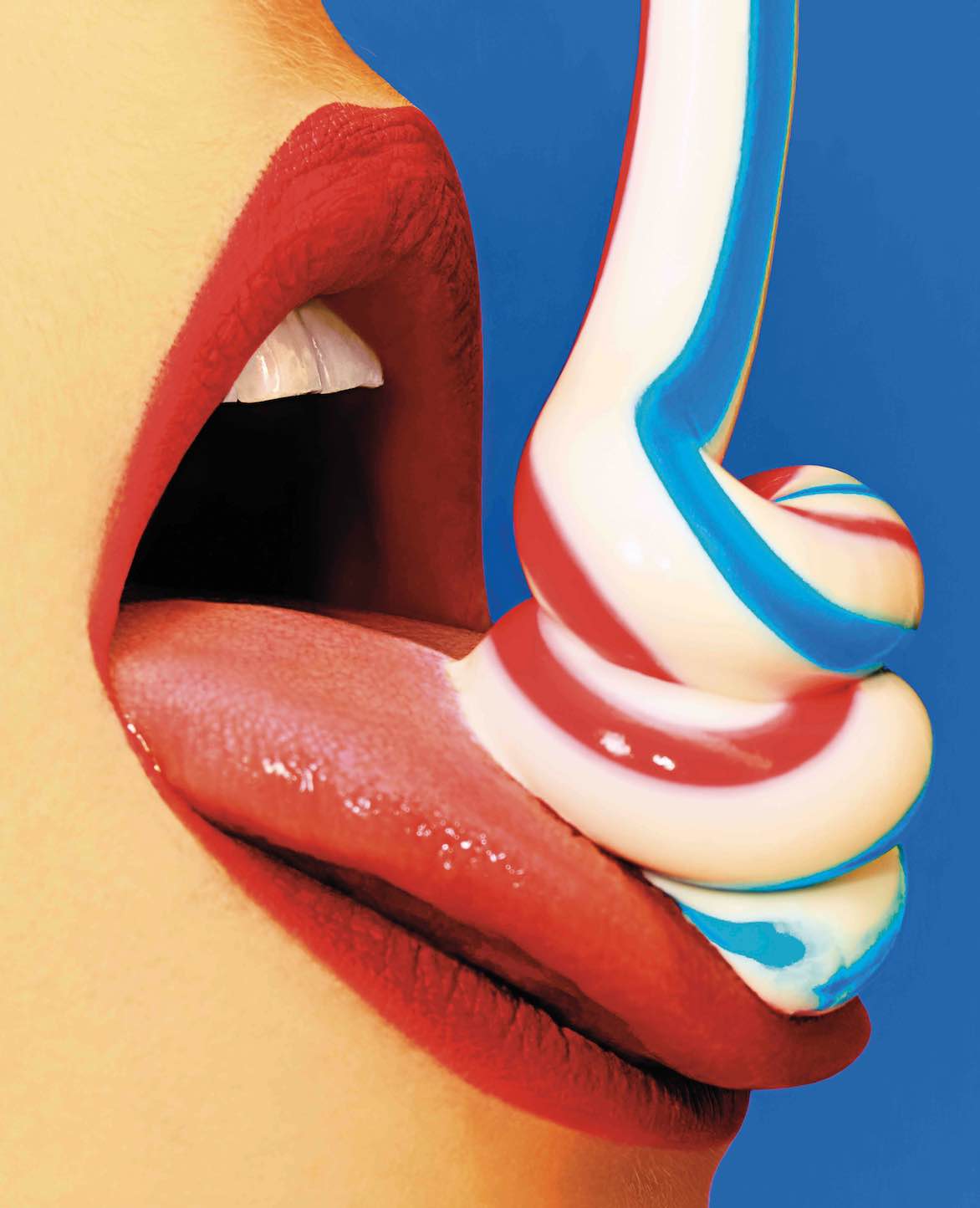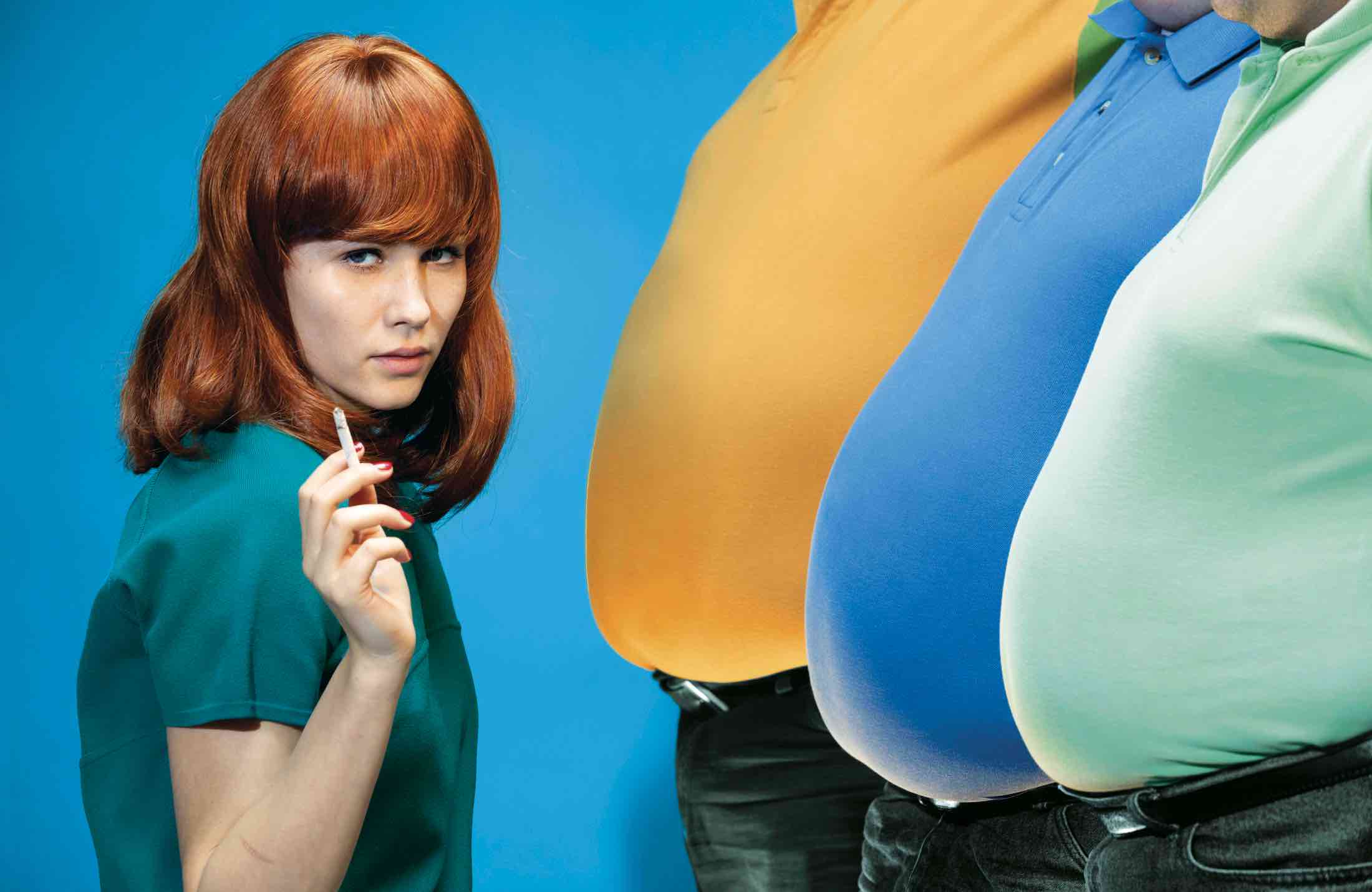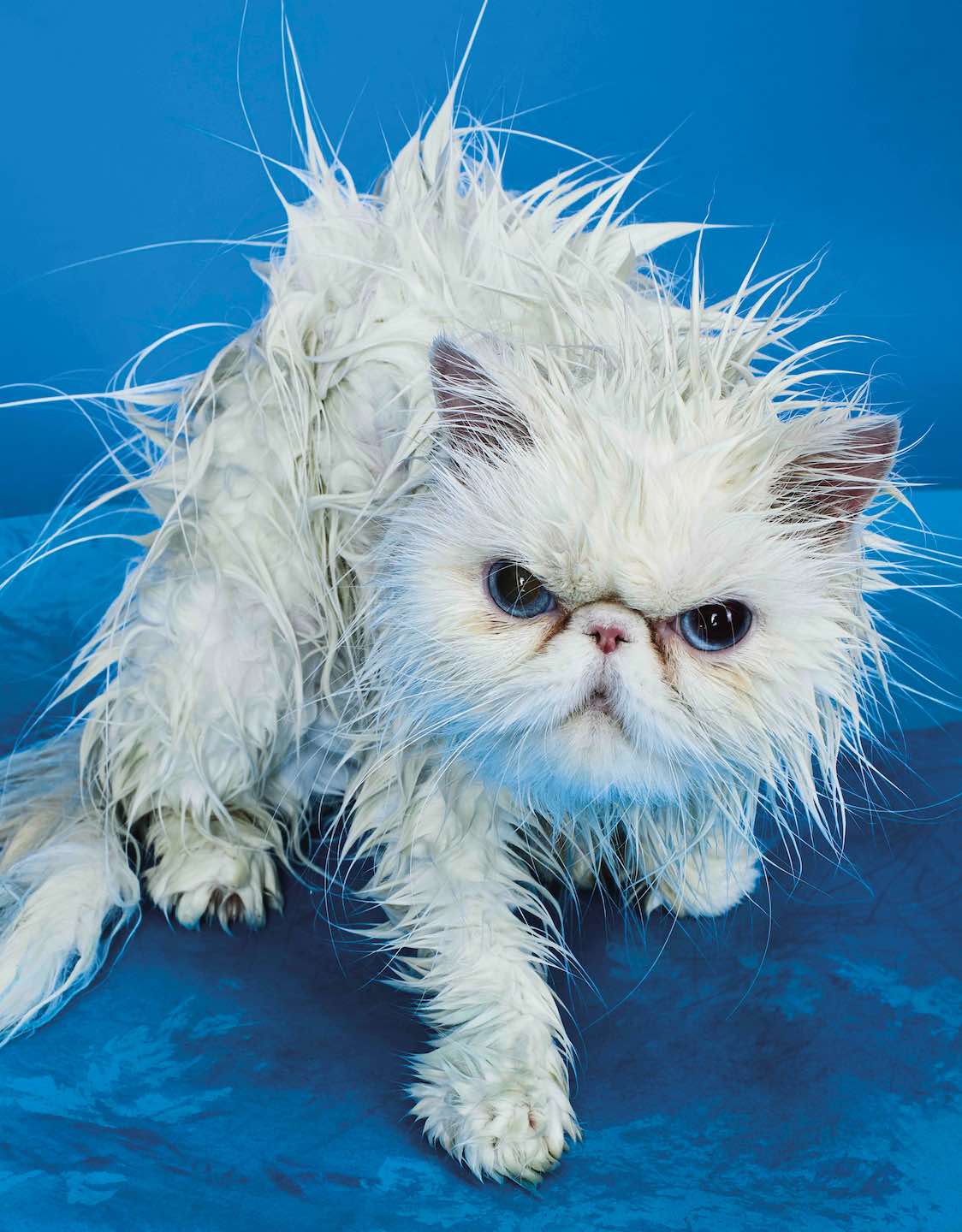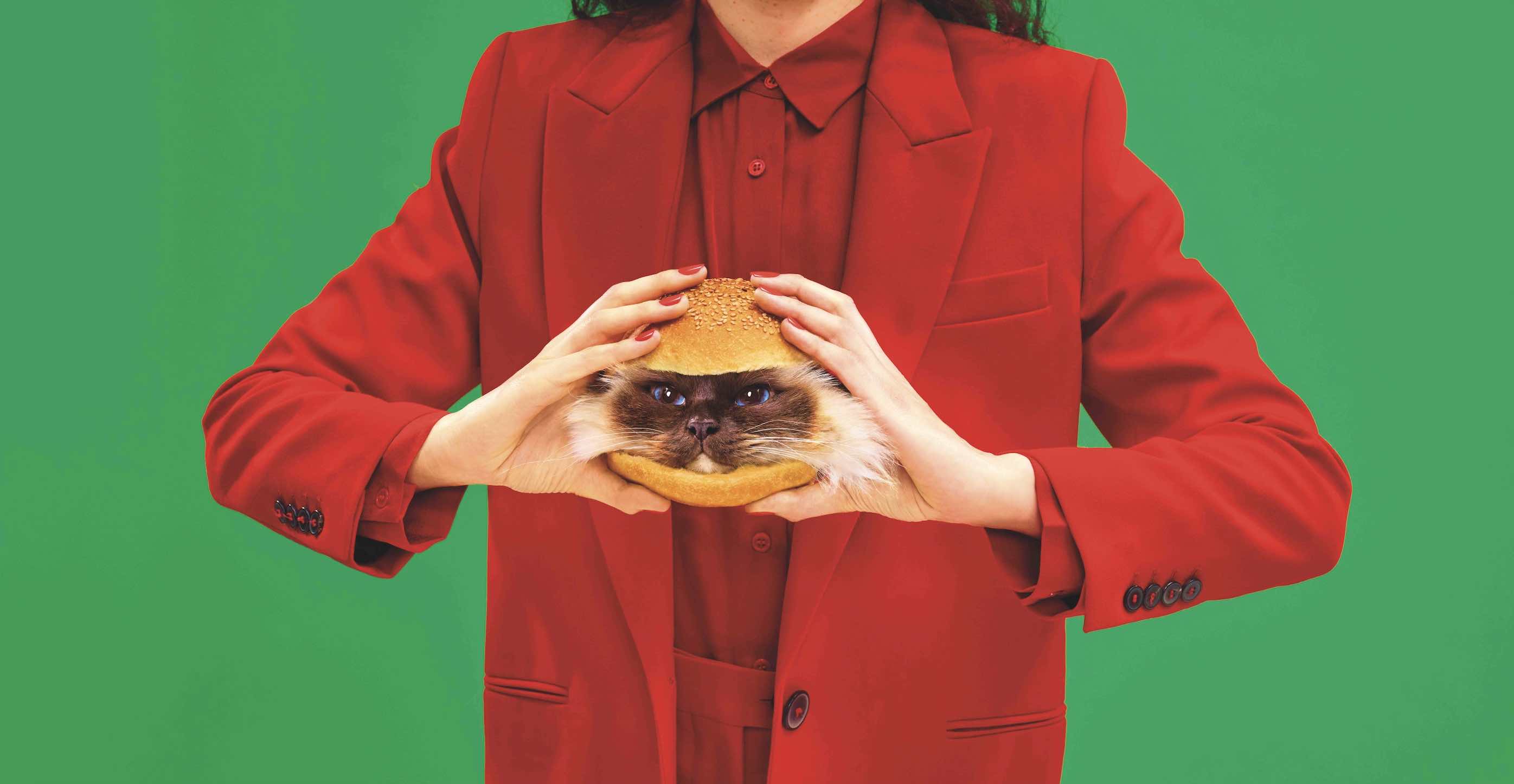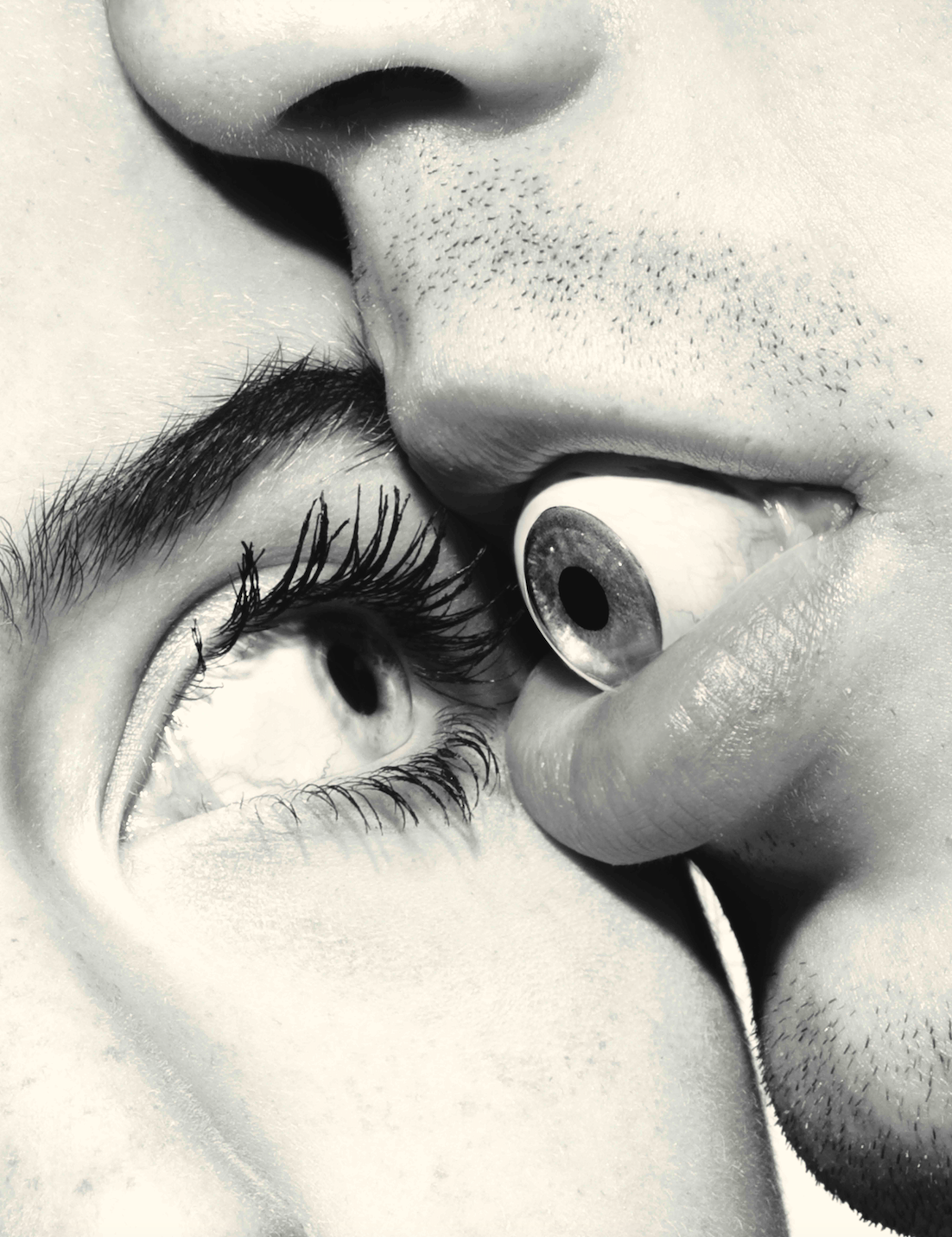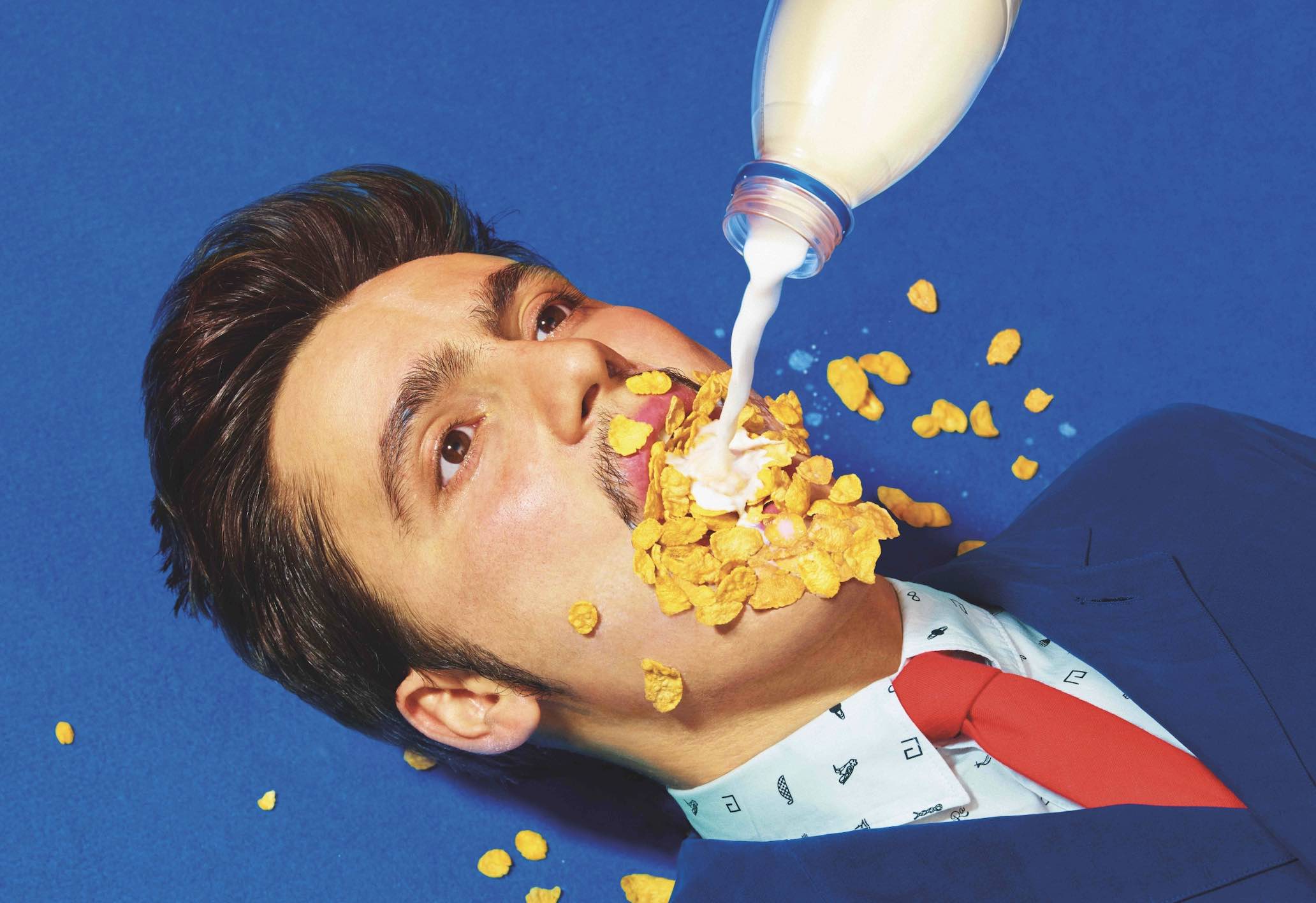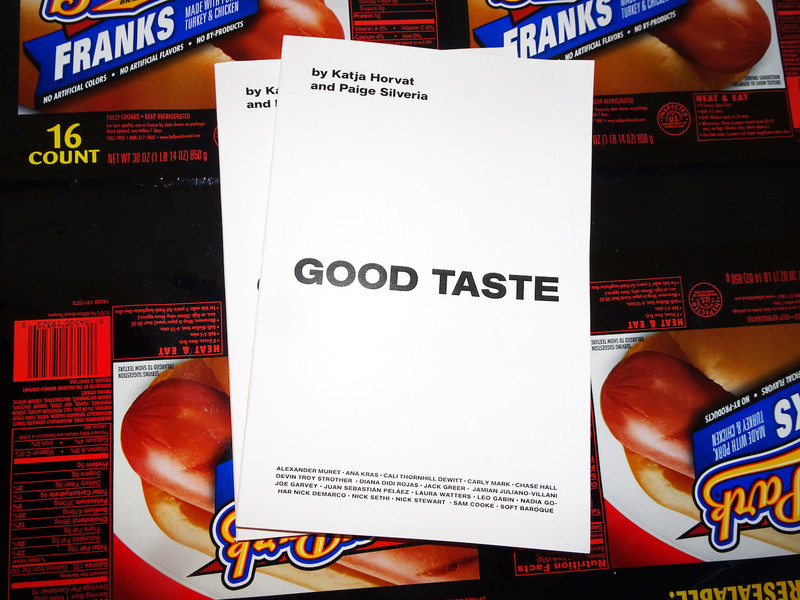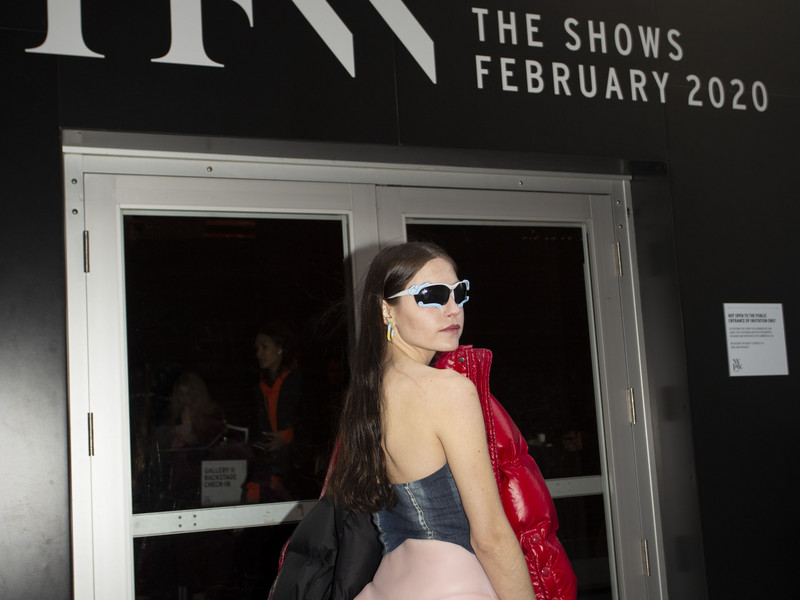Ataru Sato

For his current exhibition, “Courtship" at the KOSAKU KANECHIKA Gallery, Sato is showing his most recent work of paintings, drawings and collages. He tells us "everything that is depicted in this exhibition is about myself. I want to see all about myself, both the pure and the dark. By representing myself in my paintings, I look for someone who can understand me. It’s very hard to live without being connected with someone”. ‘ Love' and 'connection' sound like a big key to find out about his inspiration. Office is very lucky to catch Sato and interview him about his early influence, family, and all about his work.
Hey, congratulations on your new exhibition at KOSAKU KANECHIKA Gallery. At first glance, I am quickly moved by your work, probably because your urgency to capture something instinctive rather than logical is a sheer force of your creativity. Ataru, you draw a lot of eyes, and I wonder what eyes mean to you.
When people ask me about my work, I am not very comfortable responding to them, since I know that they follow whatever I say. Let’s say. if a painting itself has its consciousness and emotions and it is capable of talking about what it means, my painting might think that my eloquent explanation is really annoying. Even if I could perfectly explain what my work is about, I don’t think it is a great thing to do so.
In the past, I had an experience where I was depressed by many small things that were happening to me, and I felt as if I was the only person in the world that was suffering from a lot of horrible pains and trauma. Then I made a work around that time, wishing that everybody should be dead. When I showed the finished work to people, they asked me about what my work was about. I obviously had a hard time to tell them the truth and explain about it. But one person told me that he saw ‘love’ in my work. I was totally stunned by his response.
I am an artist and I therefore make work, but once I finish painting, I am not necessary to the work I made. I can also say the same regarding how I feel about my work. Once I finish a painting, I sometimes find it unnecessary to keep it with me, and I throw it away. What is the most important for me is my act of creating the work, and I really don't care whether other people look at it.
I know that our biggest tragedy occurs when we cannot find the way to express ourselves or recognize anybody to share with. I feel as if I can live ok because I let out my emotions through making works whenever I come across something unethical or unreasonable in my mind.
Regarding eyes, I've in fact never thought about it. But you know, I learned from this exhibition that thinking about the gazes of the visitors is very important for an installation. We made a careful choice of the position of each work on the wall for the consideration of viewing it perfectly from any given direction.
You know, in Japan we have a saying, “sense the mood’ (kuki wo yomu). We are likely to respond to the things corresponding to a given situation, and we become pretty sensitive about the other’s perception, rather than quickly acting or doing things for the sake of manifesting our own will or idea. I also used to be concerned about how people look at me or what they expect from me, especially because of my background. My parents both have hearing impairments, and people often gave us particular looks. Their eyes made me do, feel, and think about the things that I need to deal with. I must think that one’s gazes/eyes have a tremendous power to others, and they sometime deeply affect the other’s life and mind.
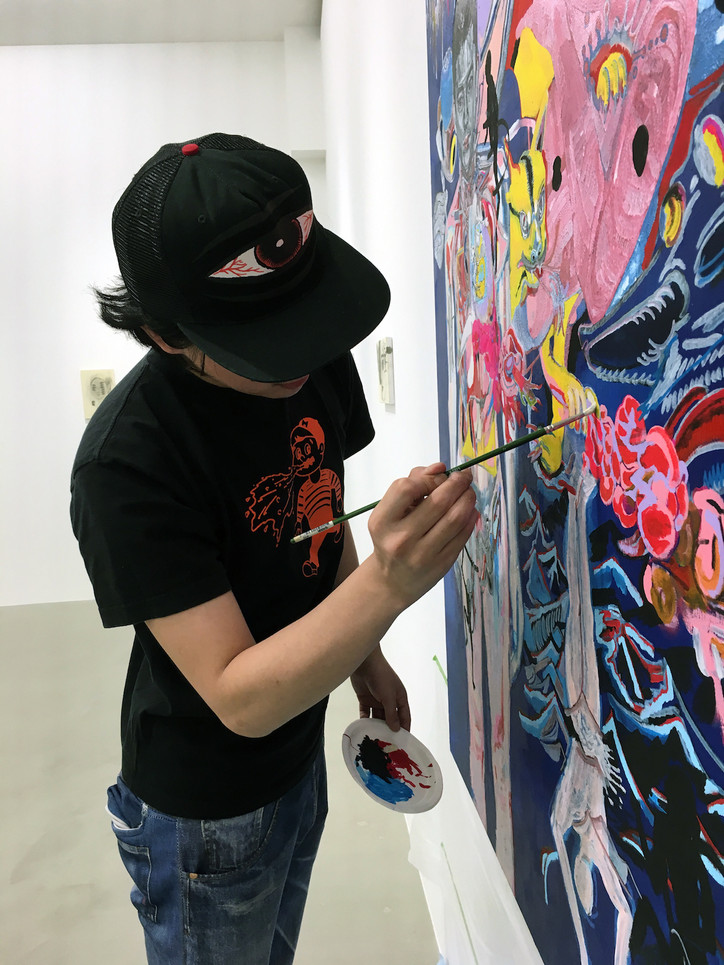
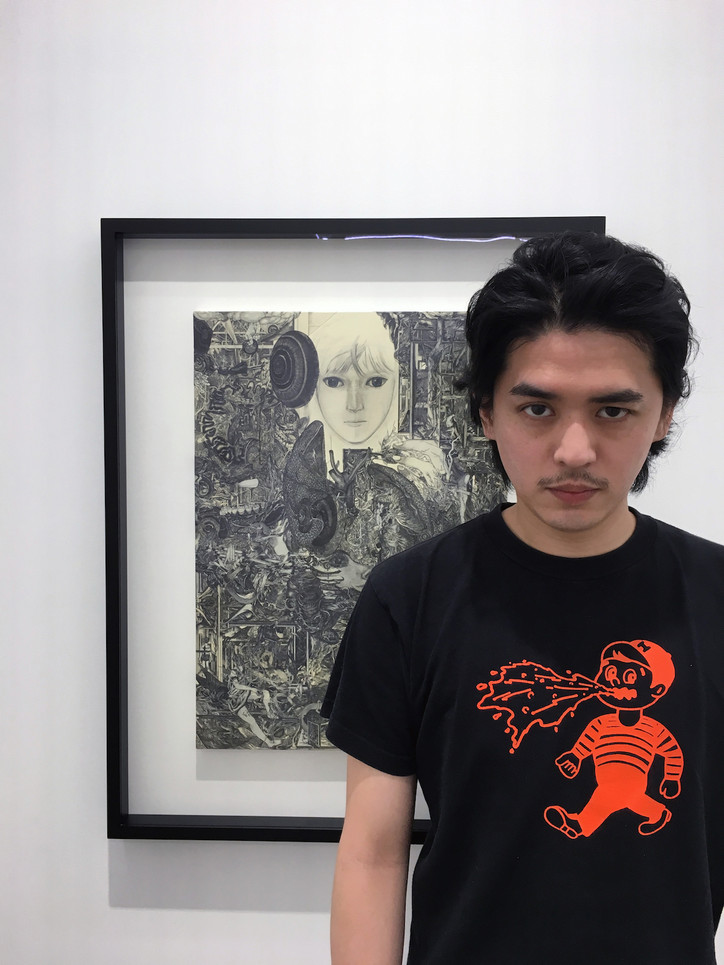
I notice that you used pretty basic colors, black, red, blue and white in painting and don’t seem to mix them up much. My first reaction to your color scheme is that it reminds me of Francis Bacon’s painting, and I wonder if you like his work. How come you prefer such basic colors in your painting? Do you have any western artist that inspires you?
When I started oil painting, I was pretty poor and could not afford to get an expensive paint set. The only color paints I could buy are the four colors: red, blue, black, and white. Now I can buy more colors and I of course own them, but I somehow still feel attracted to these four basic colors. When I was a small child, I used to enjoy seeing body anatomy and medical illustration books, and specific organs were painted in red or blue for highlighting its function in the pages. I wonder if my color preference comes from my past experience.
I like Bacon’s work but I don’t really pay too much attention to it. What's similar between him and me is that our studios are pretty messy from many paintings and other documents. When I was in college, I saw a documentary film of Robert Crumb and I was truly moved. I still think of him, his mother, brother and wife from time to time.
You mentioned that when you were a child, nobody really wanted to look at your work, or they didn’t give you any positive comments on it, and then you tended to hide it from the others. Are you feeling happy and free now about your paintings and drawings?
My parents really didn’t like that I was drawing. It didn’t matter where I drew or whom I showed my painting or drawing to. Nobody liked my work and people just said it was creepy. I had very few friends and I was not good at school. Even during my junior high school days, I was playing with dolls and painting at a very small corner of my house, since I didn’t want my family to know what I was doing. When my father noticed what I was doing, he took me to the river beach and he draw the line on the ground and asked me to walk on the line straight. I was pretty sad when he asked me to do so and then I always felt very scared if my parents wanted to abandon me whenever we decided to go out together.
When I went to high school I only talked to girls in class, and I was still making the work that many people found just ‘creepy’. But one day, one senior student at school told me that he liked my drawing and asked me to draw him more. It was a big cornerstone experience for me.
I am still making work, and I am totally aware that not all the people like it. But my experience in high school keeps me painting and drawing, since I have a hope now that there must be somebody in the world who finds my work great, I however still feel alienated from society.
How about your days at college? Did you meet many classmates who shared your visions then?
My college was for the students from the wealthy families, and I was not really the same type as the other students. And my school debts were getting bigger and bigger as I stayed in school longer. On the surface I got along with my classmates, but I felt that I was not the same as them, and I don’t keep in touch with anybody from school.
However, I was pretty determined that I would never drop out from school, even if I met nasty teachers or disliked the assignments that were given, since I was the one who chose to go to school. I might look to the others like a really miserably hard working and poor student.
I couldn’t afford to pay any attention to my classmate’s work back then, but I recently finally feel ok to review work by the artists in my same generation.
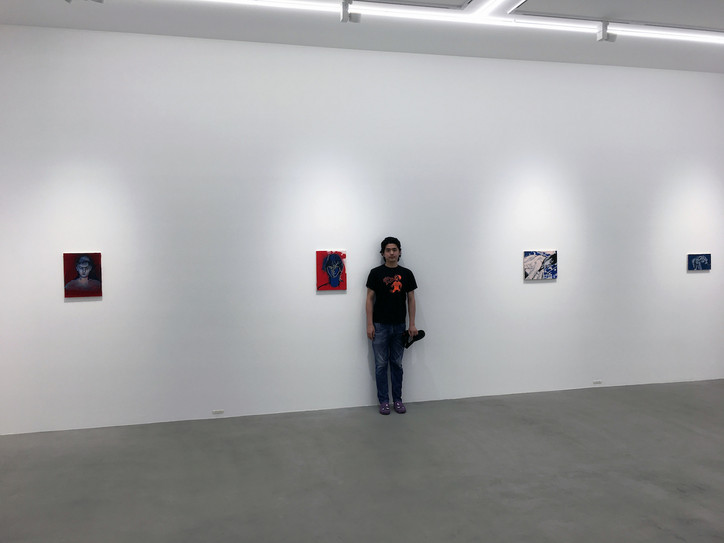
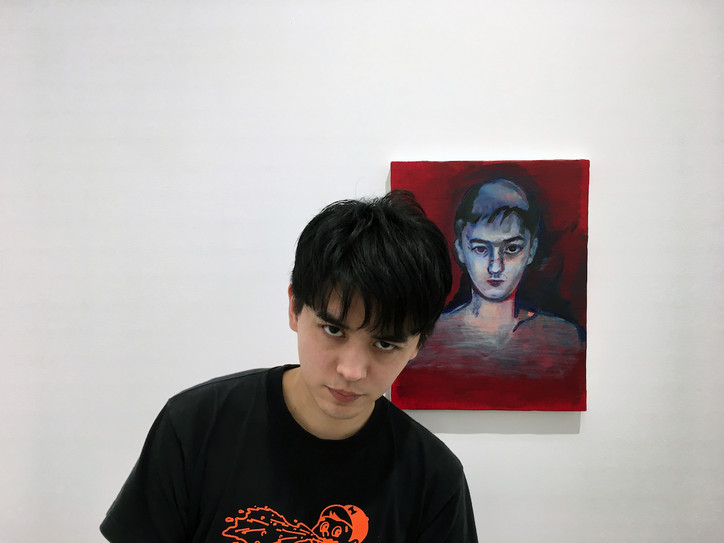
You said that you recently started paintings more, but before your main work were drawings. What made you turn to painting?
The reason why I started painting is that I read that Michaël Borremans started making paintings at an age of 30 years old. I thought that I should started painting too, since I was 29 years old back then. I know it is such a stupid reason, though. I find there are differences between drawing and painting. Drawing is made from introspectively reviewing my soul and diving into myself really deep down. On the other hand, painting is made from objectively observing myself.
It is very important for me to show both drawings and paintings, and that’s the reason why I decide to show both at my current exhibition.
When I look at your work, I somehow feel there is crazy urgency to life and suffocation for living well. I wonder if you are attracted to ‘death'.
I always think of death. I think we in fact are afraid of living as much as dying. In Japan, there are many young people are not into sex and it can be applied to Freud’s theory regarding relationship between Eros and Thanatos, and they might gain too much Thanatos and less Eros. I am just like the other young Japanese people since I like masturbation more than actual sex. I guess that it is one of the reasons why my work doesn’t appear erotic, since my sexuality comes from my growing Thanatos and distorted Eros. It is like looking at life from death instinct and longing.
“Q1” in the exhibition title has multiple meanings, a homonym for the word “kyu-ai” meaning “courtship” in Japanese, and also “Question 1”. Tell me why you call the show this way.
The way of connecting with people has drastically changed because of our use of the internet in society. Connecting with the others doesn’t require any real physical or sensual involvement, since we use electronics and an LCD screen through the computer for reaching out to them. We seem to feel pretty satisfied by this situation. I really want to connect with people in person, but I also notice that it is not easy to be associated with people because we all have very complex contradictions in our minds.
We really hope to be close to others but it is really hard to be, and we are unfortunately more likely to be not accepted by them. When I am working on my work, I avoid any communication from the outside, except seeing my lover and gallery owner. I even abolish the daily activity and I focus on working my work. Without losing myself, I can keep making work this way only because I am always thinking of people. I, therefore, believe art is done by a person and made for a person.
'Courtship' is on now until June 24 at Kosaku Kanechika gallery in Tokyo.
